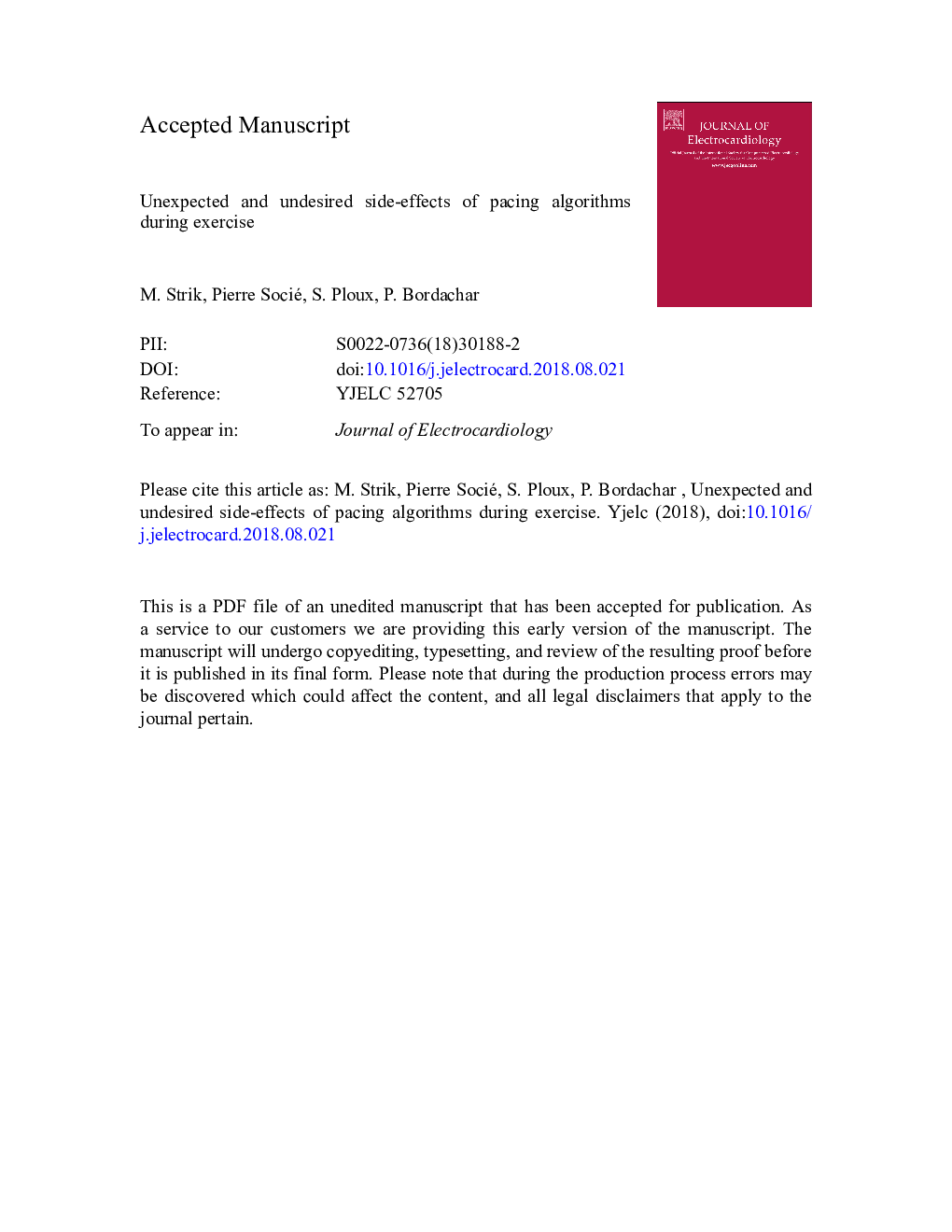| Article ID | Journal | Published Year | Pages | File Type |
|---|---|---|---|---|
| 8957237 | Journal of Electrocardiology | 2018 | 24 Pages |
Abstract
While the implantable pacemaker has initially been developed to treat symptomatic bradycardia, we demand of modern devices that they also function properly during exercise. In recent years, device manufacturers have implemented multiple proprietary algorithms which aim to improve pacemaker function by avoiding unnecessary right ventricular pacing, optimizing atrial refractory periods and diagnosing pacemaker mediated tachycardia. When activated, these algorithms may save the associated EGM into the device memory which enables later analysis by remote monitoring or device interrogation. In addition, the performance of an exercise-test while analyzing the EGM, enables the verification of proper algorithm function, the evaluation of residual symptoms and the optimization of specific parameters that vary as a function of heart rate. In this manuscript, we demonstrate how pacemaker algorithms may induce dropped P-waves during exercise in pacemaker dependent patients and loss of biventricular pacing in CRT patients.
Related Topics
Health Sciences
Medicine and Dentistry
Cardiology and Cardiovascular Medicine
Authors
Marc MD, PhD, Pierre MD, Sylvain MD, PhD, Pierre MD, PhD,
